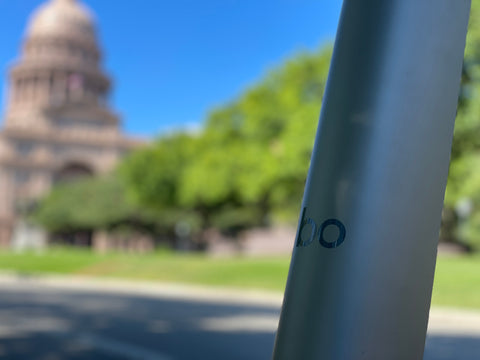Back to the articles
No More Sinking Feeling - Power Is Good
Oscar Morgan - Bo CEO - July 2025

With most scooter motors using cheap plastic covers, narrow windings and low quality bearings it was not altogether difficult to make the BoPower motor a class-leading unit.
Between my home and the Bo workshop is a 150-acre park with a hill in the middle. The climb is short - perhaps 100 metres - but steep, and the only alternative is a long and winding route through the surrounding streets.
The Segway GMax Hill Problem
Riding on our Segway GMax, I found as soon as the battery dropped even slightly this specific hill meant I was walking and pushing the scooter.
I’m not the chunkiest - perhaps 95kg with bags and boots - and a moderate slope seemed to be at the edge of what the Segway motor was specified for. Let alone once the charge dipped, at that point forget it.
Now, you could say stop crying over 100 metres. Fair enough, but how often on a normal car journey do you have to get out and help push the car?
That was the realisation: effort wasn’t the issue; trust was. Even when a hill was only 2% of the route, if the scooter couldn’t climb it that made the whole experience unreliable.
Why Most Electric Scooters Struggle With Hills
Under our mission to Enjoy Every Journey, this kicked off a search through the entire world of motor supply for something that could reliably deliver proper hill-climbing performance.
It was during this process that we discovered a fundamental flaw in the way most electric scooters - including Segway, Unagi, Navee, and Xiaomi - design and calibrate their motors.
Brands tend to make two common, misleading claims:
1. Quoting Theoretical Power, Not Real Power
Scooters often list “peak power” - but that number ignores the energy losses through the motor and controller. So while the Segway claimed 900W, the actual usable peak output was closer to 750W, sometimes lower.
2. Peak Power Only Happens at Peak Speed
Most scooters only hit that claimed power at top speed - typically around 25km/h. But the moment speed drops, like when climbing, efficiency collapses. On steep hills, power output can fall to 30–40%.
Put those two issues together, and you realise:
A scooter that says it delivers 900W might be putting only 450W to the tarmac at 15km/h.
It’s sort of like someone strapping more and more anchors to you as you try to climb; the slower you go the less power your scooter has to speed you back up. No wonder there's a sinking feeling as the hill progresses.
Enter BoPower: Real Power, Where It Matters
To solve this, we designed the BoPower motor: serious torque, delivered from low speeds, with sustained power across a wide powerband.
This meant reengineering the motor, motor controller, and battery system. It also meant tackling thermal management - because a hot motor is not a happy motor.
Many of the motors we tested had plastic casings, which insulate heat and choke performance. That wasn’t good enough. So we cast our own metal housings to maximise heat dissipation and ensure stable, repeatable performance.
Riding the First BoPower Prototype
The moment we tested the first BoPower prototype, we knew it was different. It felt punchy, responsive, and up for a fight. Bo actually wanted to climb and sprint and have fun with you.
It was the first time a scooter ride had felt like a proper vehicle. Like a car, not a toy.
We even noticed we could beat scooters with twice the ‘claimed’ power off the line at traffic lights. A small thing. Slightly childish. Deeply satisfying.
More Power and More Range
And the best part? Because Bo’s motor system is more efficient, we get all that extra performance without sacrificing range. In fact, we get more range from the same battery.
More power and more range.
It’s the holy grail.
What Is This Series About?
This post is part of an articles series where we’ll look at how Bo stacks up against some of the most popular electric scooters in the UK and USA. From the Segway Ninebot GMax, to Pure Electric, Navee, Xiaomi, Apollo, and more.
If you’re currently Googling:
- “Best electric scooter UK 2025”
- “Segway GMax vs Bo”
- “Electric scooter with hill power”
- “Alternatives to Segway, Carrera or Haiboy”
- “What’s better than Segway GMax?”
Welcome: you’re in the right place.
Next up: we're scrutinising one of the most maverick Bo design choices: fully passive suspension systems.
Link to Bo Model-M: https://bo.world/pages/bo-m
We’re glad you’re here.


